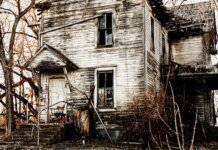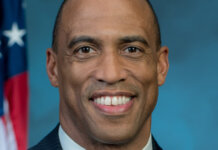Housing starts jumped an impressive 18.6% in January compared with December but were down 7.8% compared with January 2018, according to estimates from the U.S. Census Bureau and U.S. Department of Housing and Urban Development.
The increase comes after housing starts dropped 11.2% in December, month-over-month.
New homes started were at a seasonally adjusted annual rate of 1.23 million, up from 1.037 million the previous month but down from 1.334 million a year earlier, according to the report, which is routinely revised.
Starts of single-family homes were at a rate of 926,000, an increase of 25.1% compared with about 740,000 in December.
Starts of multifamily homes (five units or more per building) were at a rate of about 289,000, an increase of 4.0% compared with 278,000 in December.
Regionally, total starts were up 58.5% in the Northeast, 29.3% in the West and 13.8% in the South, however, they fell 5.7% in the Midwest.
Building permits in January were at a seasonally adjusted annual rate of about 1.345 million, up 1.4% from 1.326 million in December but down 1.5% from 1.366 million in January 2018.
Permits for single‐family homes were at a rate of about 812,000, an decrease of 2.1% compared with 829,000 in December.
Permits for multifamily dwellings were at a rate of 482,000 in January, an increase of 4.8% compared with about 460,000 in December.
Regionally, permits rose 33.1% in the Midwest and 26.4% in the Northeast but fell 8.9% in the West and 3.5% in the South.
Housing completions were at a rate of 1.244 million, an increase of 27.6% compared with December and an increase of 2.1% compared with January 2018.
Mark Fleming, chief economist for First American, says the monthly jump in housing starts “reflects rising consumer sentiment and builder confidence.”
“Despite the headwinds, home builders are pushing through new construction projects,” Fleming says in a statement.
He adds that a 2.1% annual increase in housing completions in January “signals immediate relief from the housing shortage and sends an optimistic message about the housing market.”
“We estimate that over one million new households were created in 2018, adding to the demand for housing,” Fleming says. “Yet, according to January 2019 year-over-year data, only 862,000 new housing units were completed – the net number of units completed when accounting for single-family dwellings, apartments, manufactured homes and obsolescence. This leaves a shortage of over 680,000 housing units today. January’s year-over-year growth in completions will help bridge this gap between supply and demand.”
Greg Ugalde, chairman of the National Association of Home Builders (NAHB), says the rebound “in single-family starts mirrors our builder confidence surveys, as sentiment fell in the latter part of 2018 but rebounded in January after mortgage rates showed a notable decline.”
“Some single-family projects that were on pause in December, meaning they were authorized but not started, went online in January,” adds robert Dietz, chief economist for NAHB. “However, builders remain cautious as single-family permit numbers in January were somewhat soft.”












